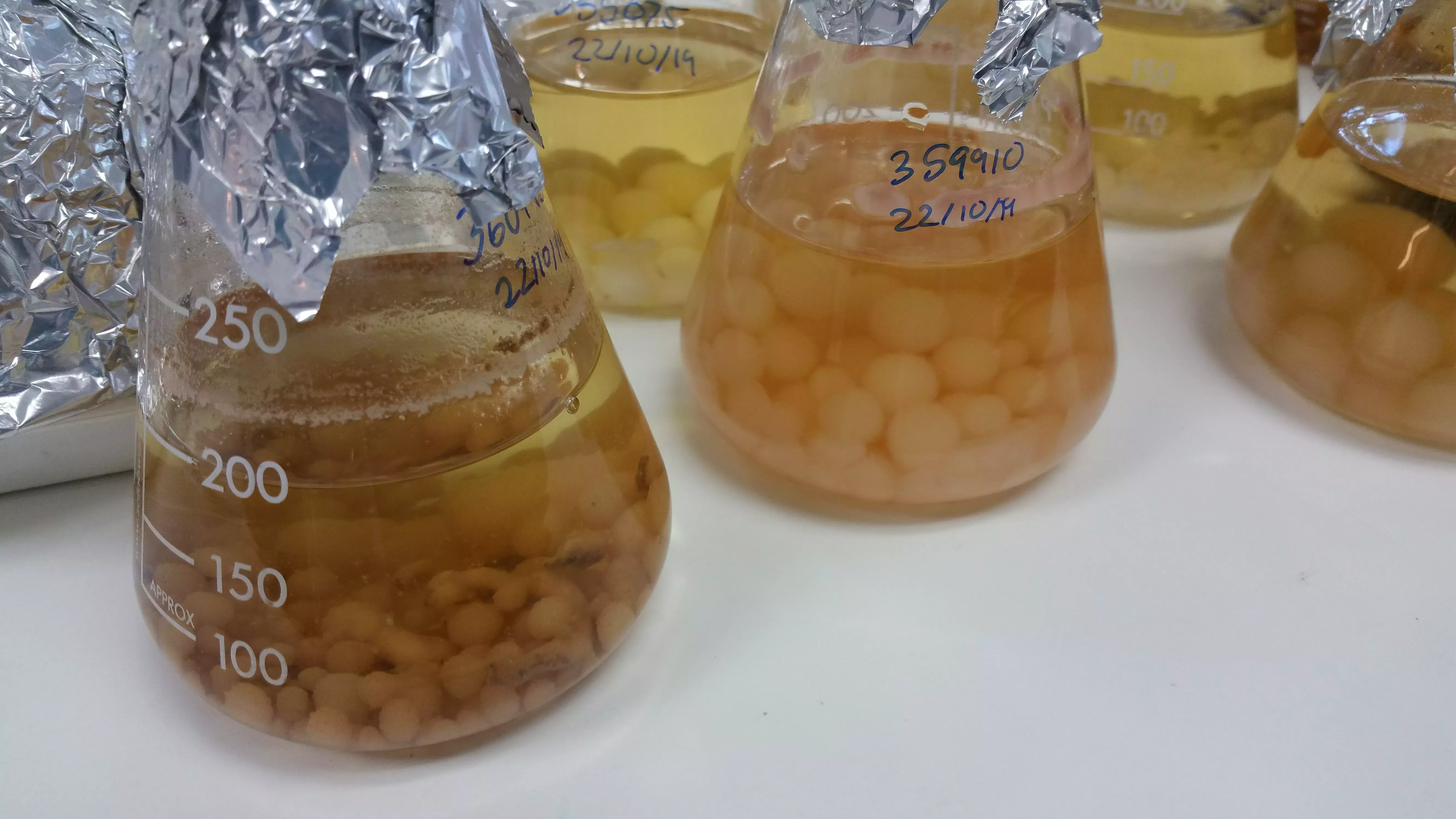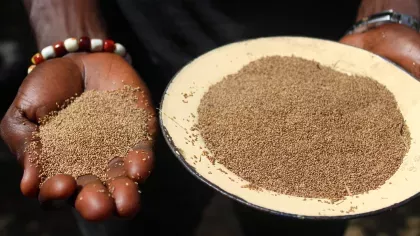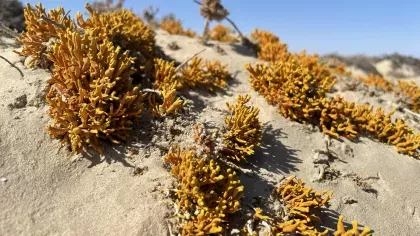4 May 2023
Genome sequencing tomorrow’s monsters and heroes
In the little-known world of fungal microorganisms living in plants, a Kew PhD student looks to get ahead of the curve of tomorrow’s important species.

We humans are obsessed with the great monsters of our world.
We love to hear tales of the once titanic dinosaurs of the land, and the modern day leviathans lurking in our ocean depths. This extends to micro-monsters too. In 2023, the most well-known fungus is the fictional variant of Cordyceps turning humans into spore-spreading beasts, in HBO’s ‘The Last of Us’.
What about in the real world? It’s true, some of the fungi we understand the most about are those we perceive as the most dangerous. Not just as a danger to human health, but also the power of fungal pathogens to topple the vast resources we rely on.
A fungus belonging to the genus Fusarium known as Foc TR4 threatens the global production of the famous Cavendish banana, while the appearance of the fungal disease wheat blast on continents that it hasn’t been seen before is certainly something to keep an eye on.
The reality, however, is that the vast majority of fungal species are not the monsters of bedtime stories, nor are they the subject of very legitimate concerns of governments and NGOs worldwide. They live what we perceive as fairly quiet lives in the microscopic backdrop of our planet.
Who’s keeping an eye on them, and do we really know what they’re up to at all?
_(20166670479).jpg.webp?itok=njxoZJVM)
The endophytic continuum
Dr Rowena Hill is Kew’s latest PhD student to gain the prestigious title of ‘Dr’. Over four years she’s dedicated her time to examining the lives of those fungi whose relationship with plants isn’t so obvious.
We call them endophytes – ‘endo’ meaning in, and ‘phyte’ meaning plant – fungi that make their home in plants without causing any notable harm or benefit. Or do they?
Positive (mutualism), negative (parasitism), or neutral (commensalism) interactions between species sit along a fluid spectrum, and for many microorganisms the exact position of their interactions can shift along this spectrum over time.
Take the Pasteurella bacteria that, under a perfect storm of climatic conditions in 2015, switched from commensal behaviour to parasitic, causing a septicaemia epidemic that wiped out two thirds of its host – the saiga antelope - within a few weeks. Or how about Candida fungus, a natural, ever-present part of our human microbial community that causes us little bother, until our immune systems become weakened or we shift the balance of our microbial community with antibiotics, at which point it can multiply and cause infamous diseases like thrush.
As much as the shift in interactions between species can lead to destruction, it may also shape new adaptations for survival. We need to be ahead of the curve in understanding how and why this happens in the fungal endophyte world: the endophytic continuum. We need genetics.

The bubble tea gene lab
We can only understand how species change their behaviour by understanding the genes behind them.
Most fungal endophyte species have never been closely examined, nor genetically sequenced. Rowena’s latest publication focuses on 15 endophytes which belong to a range of different families in the fungal kingdom. These endophytes were originally isolated from various plant hosts and countries – from Australian prickly pears to Swiss oak trees – before being carefully stored within the walls of our collaborator, CABI (Centre for Agriculture and Bioscience International).
It all begins with the classic petri dish, where each fungal strain is grown in isolation. This is the surprisingly difficult step. It takes weeks to fully culture a viable specimen, and throughout the whole process everything has to be sterile. The team find paranoia on the mind – one touch or breath out of place and weeks of work can go out the window.
The fungi then graduate from petri dish to Rowena’s favourite part of the process – the boba tea phase. A petri dish doesn’t produce anywhere near enough fungus for a big sequencing project, and so by suspending the cells in a liquid medium and adding in a little bit of consistent rotation over a period of weeks, the fungus naturally grow into balls resembling the famous beverage. Not suitable for human consumption.


To get from tiny balls of fungus to real genetic data we use one of the most unexpectedly small scientific kits around. The MinION DNA sequencer quite literally sits on your desk and plugs into your laptop via a USB.
Once we’ve extracted fungal DNA and prepared it for sequencing, it can simply be pipetted into the MinION drop by drop, and this little device gives us a live feed of the sequencing process. This is incredible to witness as both a marvel of science, and a fun green and blue light show as the device scans each individual strand of DNA. As little as a decade ago research like this would’ve taken so much money and time to complete that it would not have been feasible at this scale.

Why study the endophyte continuum?
Rowena’s research represents one example of the huge ongoing effort to gather new genetic data for fungi. It’s that data and the knowledge it will impart which will help us prepare for the monsters of tomorrow, and identify heroes with enormous potential to help.
Some of these harmless seeming fungi will tend towards parasitism, others towards mutualism, and all it can take is a slight shift in conditions to provide a little nudge towards a different lifestyle. In a world where we’ve gotten a little bit too comfortable with quite significantly shifting the conditions of our global ecosystems, this nudge may be becoming more of a shove.
Understanding the genes associated with a jump to parasitic behaviour in this unique microscopic world might have future-altering consequences ranging from saving our favourite type of fruit from disease, through to preventing the next great famine under a climate catastrophe.
For those endophytes that tend towards mutualism, the future is even more interesting. What if we could harness the genes from species which confer subtle benefits to the plants they live in – resistance to climate change, resistance to other pathogens, increased growth or production?
Building a more personal relationship with the hidden endophytes around us means not only can we better understand the complex interactions at play in our natural world, but also unlock functions to support human life as yet beyond our imagination. Genetic studies like this are the essential keystone step to making that relationship a reality.






